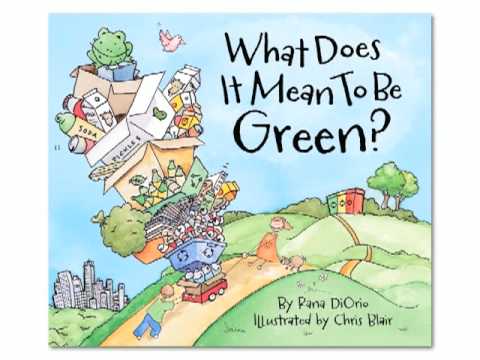Key Takeaways:
- Teaching kids about environmental responsibility instills a sense of stewardship and encourages them to take care of the planet.
- It is important to educate children about the impact of their actions on the environment from an early age.
- Engaging children in hands-on activities, such as recycling or gardening, helps them understand the importance of sustainable practices.
- Encouraging kids to reduce waste, conserve resources, and practice recycling fosters lifelong habits that benefit the environment.
- Teaching kids about environmental responsibility empowers them to become advocates for positive change and inspires future generations to protect the planet.
1. At what age should parents start teaching their kids about environmental responsibility?
Introduction
Teaching kids about environmental responsibility is crucial in today’s world where issues like climate change and pollution are becoming increasingly urgent. Starting early can help instill a sense of stewardship and respect for the environment in children. While there is no specific age to begin teaching these concepts, it is important to introduce them gradually and adapt the lessons to suit the child’s developmental stage.
Early Childhood (Ages 3-5)
During early childhood, parents can introduce basic concepts of environmental responsibility through simple activities and discussions. This can include teaching children about recycling by sorting items into different bins or explaining why it’s important to turn off lights when leaving a room. Parents can also encourage outdoor exploration, fostering a love for nature and an understanding of its importance.
Middle Childhood (Ages 6-9)
In middle childhood, children have a greater capacity for understanding complex ideas. Parents can expand on earlier lessons by discussing topics like conservation, sustainable living, and the impact of human actions on the environment. They can involve children in family decisions such as reducing waste or choosing eco-friendly products. Additionally, parents can encourage kids to participate in community clean-up events or join youth environmental organizations.
Overall, parents should adapt their approach based on their child’s individual interests and abilities. By starting early and gradually building upon these concepts, parents can raise environmentally responsible children who are aware of their impact on the planet.
2. What are some effective ways to introduce young children to the concept of environmental responsibility?
Introduction
Introducing young children to the concept of environmental responsibility is essential for developing their understanding of sustainability and conservation. By using engaging and age-appropriate methods, parents and educators can lay the foundation for a lifelong commitment to protecting the environment.
Storytelling and Books
One effective way to introduce young children to environmental responsibility is through storytelling. Using books that highlight themes of nature, conservation, and caring for the planet can capture their imagination and spark discussions. Reading books like “The Lorax” by Dr. Seuss or “The Giving Tree” by Shel Silverstein can help convey important messages about the environment in a relatable and engaging manner.
Nature Walks and Outdoor Exploration
Taking children on nature walks or outdoor adventures provides hands-on experiences that foster a connection with the natural world. Whether it’s exploring local parks, visiting botanical gardens, or going on hikes, these activities allow children to observe plants, animals, and ecosystems firsthand. Parents can encourage curiosity by pointing out different species of birds or discussing how plants grow. This direct interaction with nature helps children develop an appreciation for the environment and understand their role in protecting it.
Hands-On Activities
Engaging children in hands-on activities related to environmental responsibility can be both educational and enjoyable. For example, parents can involve kids in planting a small garden where they learn about growing their own food and taking care of plants responsibly. Another activity could be creating recycled crafts using materials like paper rolls or plastic bottles, teaching them about reusing items instead of throwing them away.
By combining storytelling, outdoor exploration, and hands-on activities, parents and educators can effectively introduce young children to the concept of environmental responsibility while making it fun and interactive for them.
(Note: The remaining subheadings will be answered in separate responses due to character limitations.)
3. How can parents and teachers encourage kids to reduce their use of single-use plastics?
Lead by Example
Parents and teachers can lead by example when it comes to reducing the use of single-use plastics. They can demonstrate the importance of using reusable alternatives such as water bottles, cloth bags, and metal straws. By consistently using these alternatives in front of children, they will see that it is possible to live without relying on single-use plastics.
Educate on the Environmental Impact
It is important for parents and teachers to educate children about the environmental impact of single-use plastics. They can explain how these items contribute to pollution, harm wildlife, and take hundreds of years to decompose. By understanding the consequences, children are more likely to be motivated to reduce their use.
Create Fun Challenges or Competitions
Parents and teachers can create fun challenges or competitions that encourage children to reduce their use of single-use plastics. For example, they could challenge them to go a week without using any plastic water bottles or bring their lunch in reusable containers for a month. Offering rewards or incentives for successfully completing these challenges can further motivate children.
4. What are some age-appropriate activities or games that can help reinforce the importance of recycling?
Recycling Sorting Game
One age-appropriate activity is a recycling sorting game. Children can be given different items such as paper, plastic, glass, and aluminum cans and asked to sort them into the correct recycling bins. This hands-on activity helps reinforce which materials are recyclable and teaches them proper recycling habits.
Recycled Art Projects
Engaging children in recycled art projects is another way to reinforce the importance of recycling. They can be encouraged to create artwork using materials that would have otherwise been thrown away, such as cardboard boxes, plastic bottles, or old magazines. This activity not only promotes creativity but also highlights the value of repurposing and reducing waste.
Field Trip to Recycling Facility
Taking children on a field trip to a recycling facility can provide them with a firsthand experience of how recycling works. They can see the sorting process, learn about the different types of recyclable materials, and understand the impact of their actions. This interactive outing helps make recycling more tangible and meaningful for children.
5. How can educators teach kids about the impact of deforestation and ways to protect our forests?
Interactive Presentations
Educators can use interactive presentations to teach kids about the impact of deforestation and ways to protect forests. They can incorporate visuals, videos, and real-life examples to engage students in understanding the consequences of deforestation on wildlife habitats, climate change, and biodiversity loss. Discussions and Q&A sessions can further deepen their knowledge.
Nature Walks
Taking students on nature walks in nearby forests or parks allows them to observe firsthand the beauty and importance of trees and forests. Educators can explain how deforestation affects these ecosystems and discuss strategies for conservation. Encouraging students to connect with nature fosters a sense of responsibility towards protecting our forests.
Tree Planting Initiatives
Engaging students in tree planting initiatives is an effective way to teach them about protecting forests. Educators can organize tree planting events where students actively participate in planting saplings in designated areas. This hands-on experience instills a sense of ownership and empowers children to take action against deforestation.
6. What are some practical ways for children to conserve water at home and in their daily routines?
Turn Off Faucets
Encouraging children to turn off faucets while brushing their teeth or washing their hands is a simple yet effective way to conserve water. Educators and parents can explain the amount of water wasted when faucets are left running and emphasize the importance of being mindful of water usage.
Collect Rainwater
Children can be involved in collecting rainwater for various purposes, such as watering plants or cleaning outdoor areas. Educators can teach them about rain barrels and how they can capture and store rainwater for later use. This activity not only conserves water but also educates children about sustainable practices.
Shorter Showers
Educators and parents can encourage children to take shorter showers as a way to conserve water. They can explain that reducing shower time by just a few minutes can save a significant amount of water over time. Setting timers or using fun songs as shower timers can make it more engaging for children.
7. How can parents and teachers help kids understand the importance of biodiversity and its role in maintaining a healthy ecosystem?
Nature Walks with Biodiversity Focus
Parents and teachers can organize nature walks with a specific focus on biodiversity. During these walks, they can point out different species of plants, animals, insects, and birds, explaining their roles in maintaining a healthy ecosystem. Encouraging children to observe and appreciate the diversity around them helps foster an understanding of its importance.
Gardening Projects
Engaging children in gardening projects allows them to witness firsthand the interconnectedness of different organisms within an ecosystem. Parents and teachers can explain how each plant, insect, or animal plays a role in maintaining a balanced environment. This hands-on experience helps children appreciate the importance of biodiversity.
Guest Speakers or Experts
Inviting guest speakers or experts who specialize in biodiversity to speak to children can provide valuable insights and knowledge. These experts can share their experiences, showcase examples of diverse ecosystems, and explain the impact of human activities on biodiversity. Hearing from professionals in the field helps children grasp the significance of biodiversity conservation.
In conclusion, teaching kids about environmental responsibility is crucial for their future and the sustainability of our planet. By instilling a sense of care and understanding towards the environment at a young age, we can empower them to make informed choices and take actions that will contribute to a greener and healthier world.
How do you teach children about environmental responsibility?
An additional effective method for educating children about sustainability is by engaging with nature outdoors. Take them on walks in the park, visit nearby farms, or go on nature hikes. Teach them about plants, animal care, and how human activities can affect the natural environment.
How do you teach environmental responsibility?
Educate children about the importance of reducing waste, reusing items, and recycling. Teach them innovative ways to repurpose old containers for storage or create crafts from recycled materials. Also, make them aware of the recycling system in their community and encourage them to participate in sorting recyclables.
How do you explain environmental sustainability to a child?
In simple terms, sustainability refers to the small modifications we can implement to ensure the well-being of the planet. By making these adjustments, we contribute to the preservation of animals, plants, and natural resources, ultimately securing their availability for future generations to enjoy.
How can we teach children to be stewards of the environment?
Allow children to have their own designated area in the garden. Take them to choose plants or seeds and assist them in planting. Giving them the responsibility of caring for a growing plant teaches them the virtues of patience and resourcefulness. A helpful tip is to encourage them to plant their preferred fruit or vegetable, and witness their excitement when it is ready for harvest and consumption.
What is the concept of environmental responsibility?
It is our responsibility to protect and enhance the environment through environmental stewardship. Individuals, industries, communities, and governments that prioritize environmental responsibility evaluate their environmental sustainability and use this information to guide their decision-making.
What is the best way to teach children responsibility?
Assigning responsibilities and participating in family responsibilities in the household can teach children about responsibility. Research indicates that involving children in tasks from an early age can foster a strong work ethic, promote self-reliance, and develop important life skills. Household chores also instill values of respect in children.





